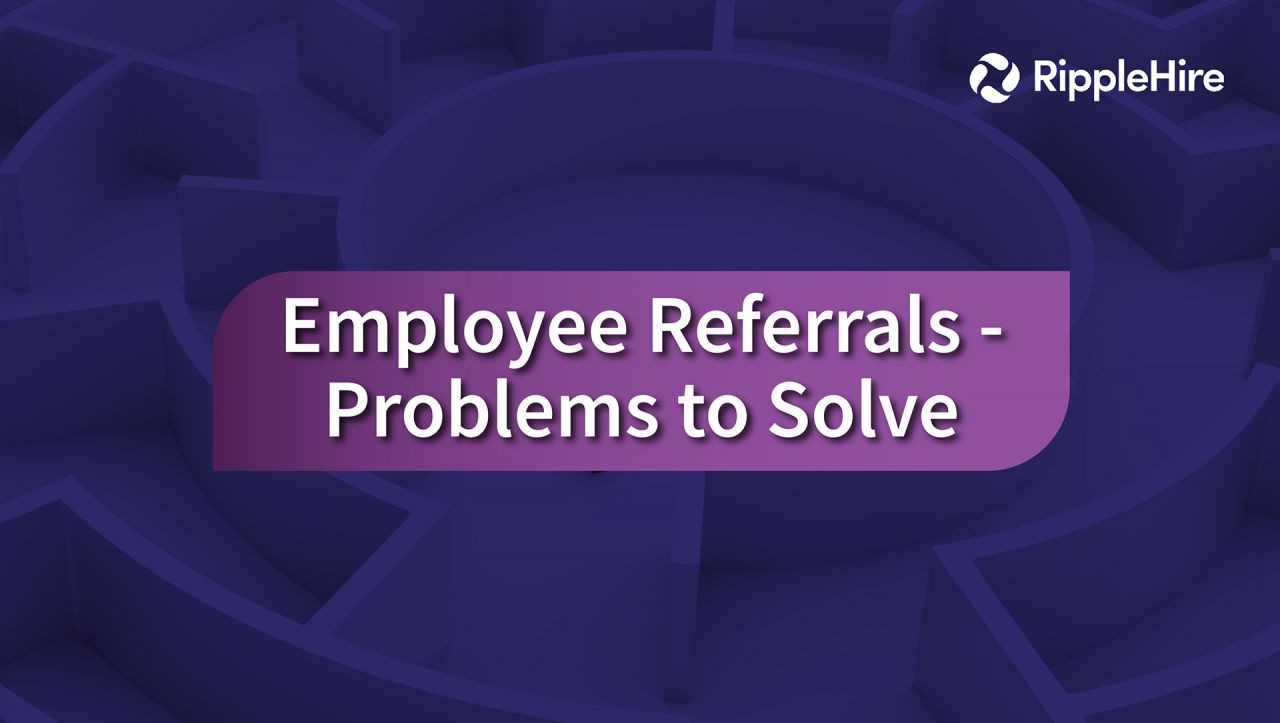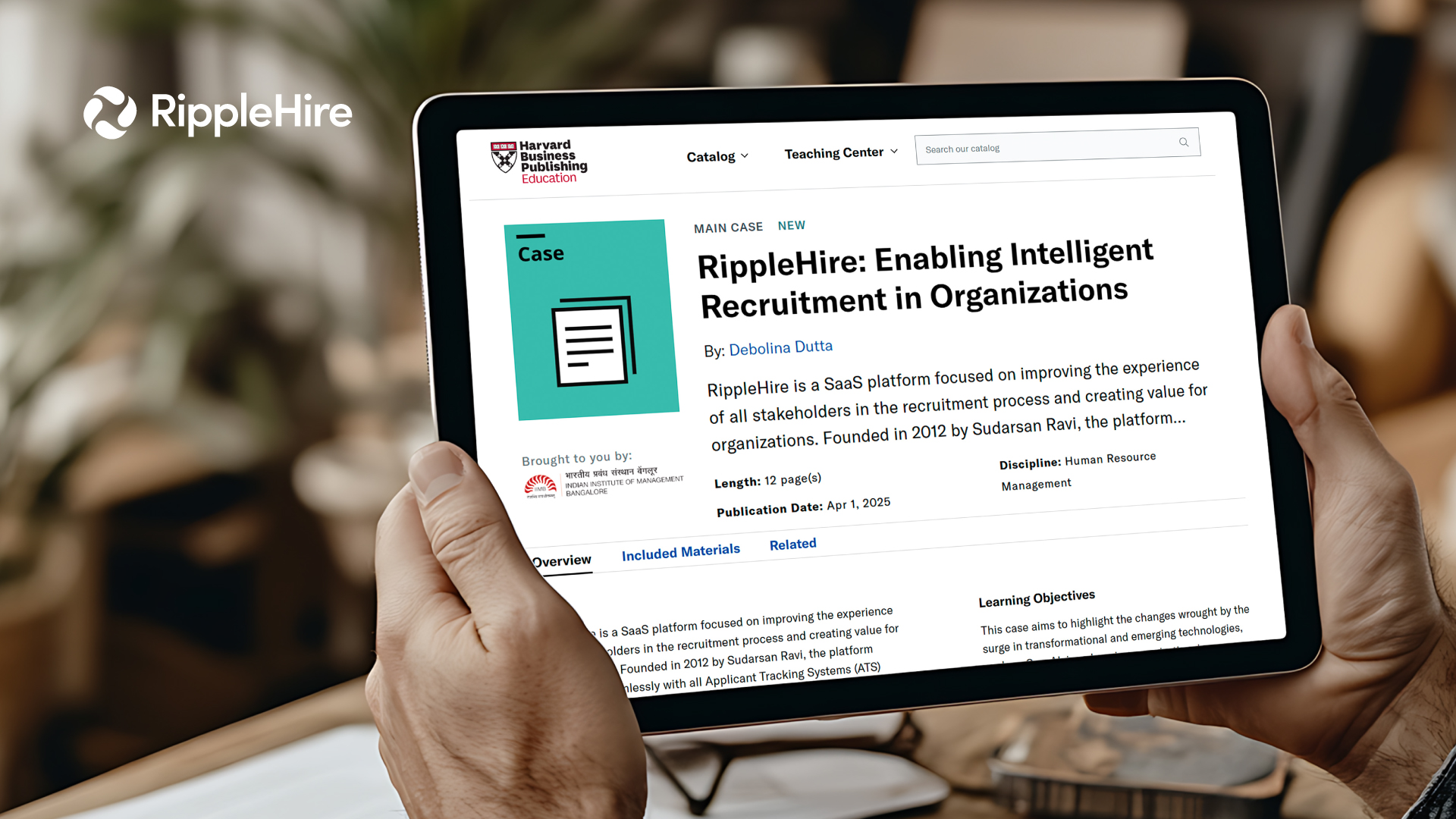Employee referrals are good for any organization, be it big or small. A LinkedIn report affirms, when companies follow the traditional recruitment style, hiring takes an average of 55 days. In contrast, it takes only 29 days to hire a candidate through referral.
The edge in employee referral is that the referred candidates stay longer in their jobs. The same report from LinkedIn shares real-time data where 46% of referred hires were working for the company that hired them for at least a year. Whereas 33% of people hired through career sites and 22% hired through job boards left the company earlier.
Though employee referral sounds simple and more effective with better job acceptance rates, there is a flip side to this story. Let’s discuss the real challenges in any employee referral program.
1. High number of profiles vs lower referral contributions
When a recruiter is posting a job referral, the HR department is likely to find a large number of profiles reaching their inboxes day in and day out. Amidst all the profiles they receive, only a handful meets all the criteria that the job position demands. Most often, through employee referrals there are higher chances of profiles being shortlisted and finalized for a particular department or similar roles.This is the outcome of employees knowing like-minded people or having friends with related educational or technical background or skill set. However, the high number of profiles somewhat does not sum up to the referral contribution or the source mix the recruiter is looking for.
2. High recruiter effort due to high volume of junk
Poor recruiters! You need to spare them from going through one profile after another. Referral programs should not lead to a high volume of junk. Recruiters should inform the employees that the recruiting team will receive a deluge of applications. Moreover, it is not possible to process every candidate’s profile. All that you have to do is, set the right expectations, remove any entitlement and angst from the referral program. Employees also recognize the humongous task involved in processing the right candidate. Never fail to appreciate the transparency in communication despite the volume of frivolous referrals and be open to referrals that logically fit in.
3. Inconsistent Communication about Referrals
Some referral programs are misunderstood, and some misguide the employees. During the first referral job posting, the prerequisites will be completely different. However, during the course of hiring there will be several changes to the referral posts, and the employee who is intending to refer, will not feel free to do so because of the inconsistencies in the communication received. Recruiters should refrain from communicating different versions of what they need and stop confusing the existing employees.
To avoid mishaps due to inconsistent communication, recruiters can send timely, personalized emails to both the employer and to the referred candidates.
Luckily, this process isn’t exhausting and time-consuming!
4. Lack of Consistent Feedback to the Employee

Even after referring a friend or ex-colleague, most of the employees are kept in the dark. They are not aware of the progress of the referral. Most often, employees are in a dilemma. On one hand, their friend will keep checking with them about the job opening and will be anxious if they still hold a chance of being employed. On the other hand, the employees will only see a grey shade and not know what is happening to the candidate’s profile. When confronted, the feedback they receive from the HR desk will be inconsistent, which will leave the employees baffled and they will still not know the actual status of the hiring process.
The easiest way is to have systems that allow recruiters to communicate in real-time, openly and regularly with all the employees who had referred someone. Always remember to provide honest feedback and never fail to update or inform the employees.
5. Lack of Recognition/Appreciation
In the gamut of referring, shortlisting, interviewing, finalizing, and on-boarding, the existing employees can feel less valued or completely not valued for their contributions. When they get to hear negative comments like, “what kind of person did you refer?” or “this candidate is an ill fit” or “The employee whom you referred is not adding any value to the company.” can make an employee feel unworthy for having brought their acquaintance to their own workplace. Not only that, but there is also a possibility of the friend who is referred and currently working to say things like, “you know your company too well, then why did you refer me here?” or “why the heck did you refer me to this kind of workplace?” Both the organization and the referred person will only build negativity and strip the rays of hope for appreciation.
To reap the rewards of success, start recognizing and appreciating the efforts taken by employees who use the referral programs. Find ways to make them feel valued and appreciated.
6. Possible Payment Conflicts

The monetary benefit of a referral program is the driving factor for the existing employees to bring in talents to the organization. Most often, companies are not transparent about what they meant as a monetary reward. The percentages may confuse, or the amount mentioned to suit the grade structure can cause uncertainty at the buy-end of a referral. When existing employees face issues with referral rewards, they lose the trust in their recruiter and will not refer, in turn, they may even want to quit their jobs.
It is crucial for every organization to have a transparent referral reward program and practice what they preach and pay promptly without any conflicts. Offer interesting incentives even if it is not a huge amount. Always recognize the time and effort of employees who positively contribute to the referral program.
7. Good Resumes Lying in Mailboxes
oftentimes, good resumes of talented people just lay in the mailbox. A mailbox puts too much of an onus on the recruitment team – to figure out the right profiles, analyse whether its a right demand and check if the candidates are even eligible for the requirement. All in all a mailbox is a black box.
A good referral program needs three parts of a triangle to succeed. It requires employees to be engaged, the right candidates to participate against the right job. When met, it drives the magical conversion resulting in a successful employee referral program.
8. Poor Candidate Experience
A candidate will get to know the status of the hiring process if the person applies via a job portal or attends a walk-in-interview. There will be some form of intimation, an acknowledgment mail, the status of hiring, such as ‘shortlisted’ or ‘on hold’ text appearing on job sites. But with traditional employee referral programs, there is no way a candidate can track the status of his or her profile. The only way the candidate can check is through the person who referred. Poor candidate experience in referral programs leaves no room for candid exposure to avail suitable jobs.
Embrace technology and automation. Outsource or invent your own recruitment tool, which allows the candidate to easily track, reach out and find job placements. This will also improve and fasten your communication with the referred candidates.
What are your thoughts about the setbacks of employee referral programs? Do you have a formal employee referral program in place? If so, I would recommend you to take this assessment test and assess the quality of your referral program.






